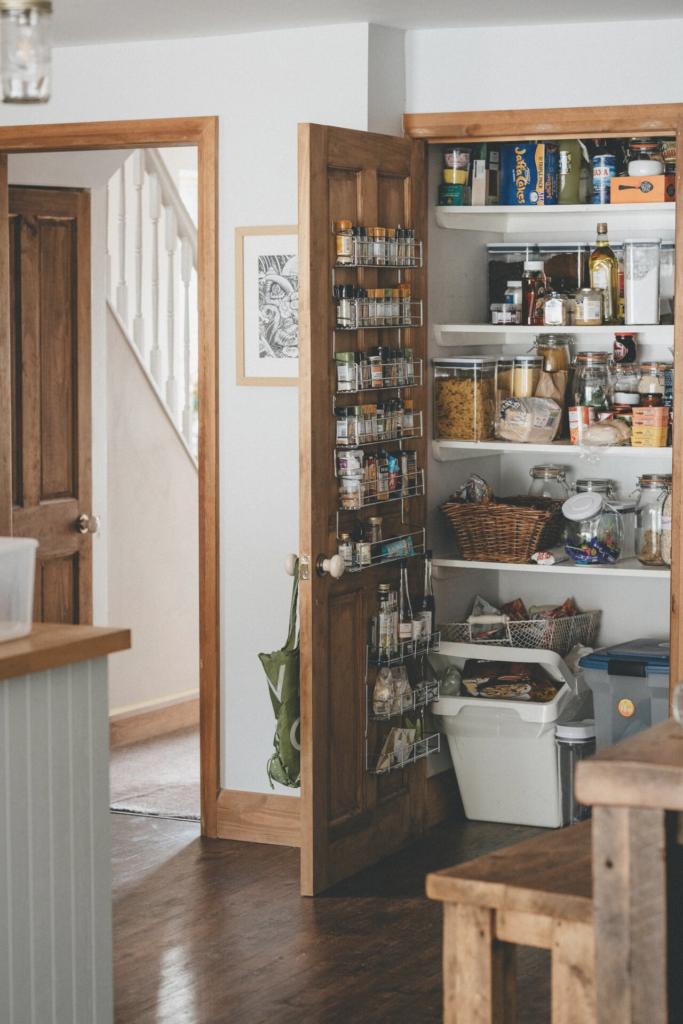Published: October 12, 2021 I ORGANIZING
Your kitchen also needs some TLC (yup, tender loving care!), so give your kitchen a detox now and you’ll be glad you did! Of course, our kitchens are where we regularly prepare, cook, and store our food and spend time eating, so it’s very important to always have a clean, neat, and organized kitchen. It’s also bothersome to have a kitchen without a system as it will make you waste time finding the items that you need or put you at risk of eating food products that aren’t fresh anymore. So, here’s a quick guide to help you declutter your kitchen. If you only have a few minutes a day, this is okay; you can continue the next day or during the weekend.
Are you ready?

There are 3 major things you need to do: throw out, recycle, and give away/ donate.
It’s very important to throw out things first so that you can empty your cabinets, pantry, and shelves and make room for stuff you really need. Recycling is also important so that you can reuse items, saving both the environment and your wallet!
THROW OUT
It’s important to keep your kitchen clutter-free and clean by discarding food and kitchen items that may do you more harm than good. Sometimes, you might not notice that there are already food in your kitchen that are spoiled, expired, or rotten. Thus, regular decluttering is a great habit.
A. Food and medicine
- Expired or spoiled food/products including medicine and vitamins
- Canned goods that have bulges or are swollen or have visible damage
- Moldy foods
- Food and beverages that are stale or have lost their flavor
- Fruits and vegetables that have worm holes or pest holes or are yellowish or blackish
- Food destroyed by insects/pests
- Wilted or rotten fruits and vegetables
- Meat, poultry, and seafood that have greenish or dark brown color, bubbles, or a foul odor
- Food that has lost its crispiness or original quality (for example, stale chips or biscuits)
- Seeds and grains that are moldy or with pests
- Empty soft drink bottles, tea bottles, juice bottles, and milk cartons
- Used cooking oil and any kind of oil that has gone rancid
- Foods not authorized by the State Food Administration or are from a questionable source

B. Kitchen appliances and other supplies
- Kitchen appliances that are damaged beyond repair
- Carton boxes used for packing groceries (unless you plan to use them for something)
- Damaged plastic containers, paper, Styrofoam/Styropor boxes, and cartons
- Torn plastic bags
- Egg cartons
- Overused, worn-out, or torn sponges and scrubbing pads
- Rusty cooking tools, baking tools, and utensils
- Glassware and ceramic ware that have cracks
- Pots and pans with missing handles or rusty or blackened surfaces
- Pots and pans that have lost their non-stick coating
- Worn-out aprons and mitts
- Faulty electric extension cords as these may cause short circuits if you plug your appliances in them
- Old candles, matches, lighters, etc.
- Broken magnets
- Old or torn rugs and dish towels
Throw out stale or stagnant water from pails, or water that dripped under the sink. Lastly, dispose of trash properly.
Before continuing, download the free printable kitchen decluttering checklist here.
RECYCLE/REUSE
- Recycle empty bottles by cleaning them with soap and water. You can then reuse them as containers for pens, nuts and bolts, or other knick-knacks.
- Plastic bags or eco bags can be used when shopping at the grocery.
GIVE AWAY OR DONATE
A lot of people are now jobless and can’t support themselves, so giving back to the community as an act of kindness is a great undertaking.
Give away or donate excess food in your pantry that you can’t consume by yourself; however, don’t give food that will expire soon or isn’t fit for consumption.
You may also give away old cookbooks that you no longer need as most of the recipes are now easily accessible online.
For mugs, plates, utensils, and other kitchen stuff that you’ve hoarded or collected throughout the years, you can donate them to others or give them to friends and family.
OTHER TASK/S AFTER DECLUTTERING
The last step is to clean and sanitize the following so your kitchen will be spick and span in no time!
- cabinets, drawers, shelves, and pantry
- countertops and sinks (check if there are any cockroaches or other pests under the sink)
- refrigerator and freezer
Don’t forget your free kitchen decluttering printable checklist here.
Start decluttering your home now! Check out these other super helpful decluttering and cleaning guides.
- 19 Fast and Easy Ways to Declutter Your Home That You Can Do Now
- Real Simple and Quick Ways of Decluttering and Cleaning Your Closet
- Your Ultimate Guide to Uncomplicated Decluttering and Cleaning the Bathroom
Save this post for later 🙂










